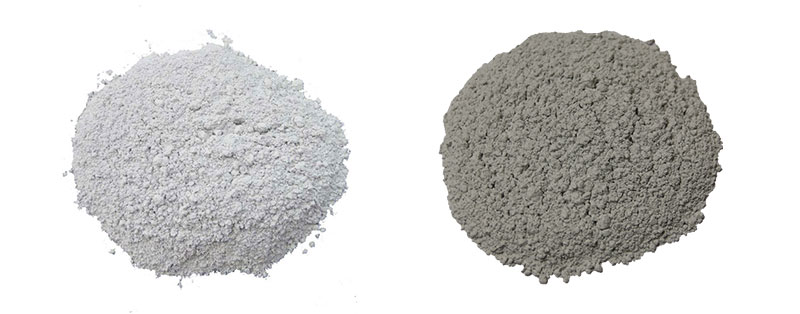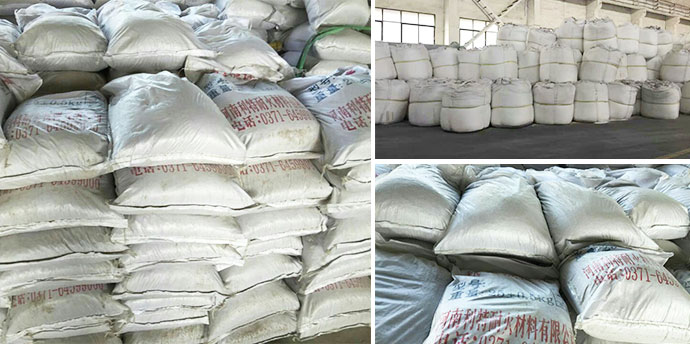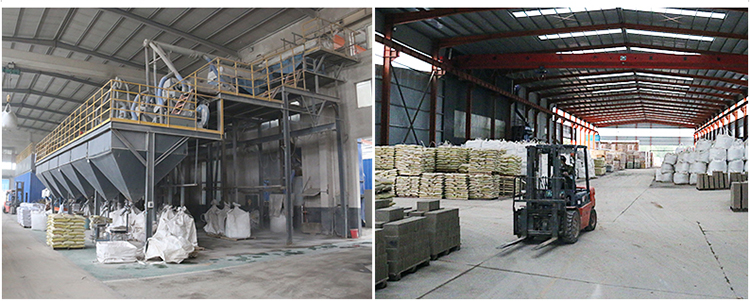Refractory concrete is an amorphous refractory material which is directly used for refractory aggregates, powders and binders with water or other liquids and is not used for calcination. It is also called refractory potting material. Generally, most of this material is poured by pouring. So it is also called
refractory castable. It can be divided into: 1 ordinary refractory concrete. The aggregates used are high alumina, clay, siliceous, alkaline materials (magnesia, chromite, dolomite, etc.) or special materials (carbon, silicon carbide, zircon, etc.), or several Refractory aggregate combination. 2 insulated refractory concrete. It is mainly formulated with refractory light aggregates. The light aggregates used are expanded perlite, vermiculite, ceramsite, porous clay clinker, hollow alumina spheres, etc., and may also be combined with several refractory light aggregates or combined with refractory aggregates. The cement used for refractory concrete is high alumina cement, phosphate cement, water glass cement, clay and the like.
 1,Advantages of refractory concrete
1,Advantages of refractory concrete
The refractory concrete is a non-burning product, the production process is simple, the energy is saved, the shape can be shaped according to the needs, the integrity is better than the brick lining, and it is suitable for mechanized construction, and the lining life can be prolonged when used reasonably. Refractory concrete is mainly used in industrial furnaces such as metallurgy, petroleum, chemical, building materials and machinery. The general use temperature is 1300 ~ 1600 ° C. Refractory concrete with a temperature lower than 900 °C is called heat-resistant concrete, and is mainly used in the foundation of thermal equipment, chimneys, flue and other structures.
 2,compared with the performance of refractory bricks
2,compared with the performance of refractory bricks
(1)The degree of refractoriness is similar to that of refractory bricks of the same material, but since the refractory concrete (casting material) is not sintered, the shrinkage is large at the initial heating, so the load softening point is slightly lower than that of the refractory brick. Despite this, overall performance is superior to refractory bricks.
(2)Refractory concrete is superior to the low-temperature cementing agent, and the normal temperature withstand strength is high. At the same time, because the integrity of the masonry is good, the gas tightness of the furnace is good and it is not easy to be deformed. The outer steel shell steel can be eliminated, and the performance of the furnace against mechanical vibration and impact is better than that of the brick masonry. For example, it is used on the side wall of the soaking furnace, where the mechanical wear and collision are relatively strong, and the life is several times higher than that of the brick.
(3)The thermal stability is good, most or all of the aggregate is clinker, and the expansion is offset by the shrinkage of the cement. Therefore, the thermal expansion of the masonry is relatively smaller than the brick, the temperature stress is also small, and there are various structures. A crystalline, needle-like, chain-like crystalline phase. Strong resistance to low temperature stress. For example, it is used to cast the soaking furnace mouth and the furnace cover, and the service life is extended to one and a half years.
(4)The production process is simple, and the complicated brick making process is eliminated. Can be made into a variety of prefabricated blocks, and can be mechanized construction, greatly speeding up the furnace building, more than ten times more efficient than bricklaying. It is also possible to use waste bricks and the like as aggregates, and turn waste into profit.




 +86-371-64599000
+86-371-64599000 +86-371-64599000
+86-371-64599000 sale@literefractory.com
sale@literefractory.com